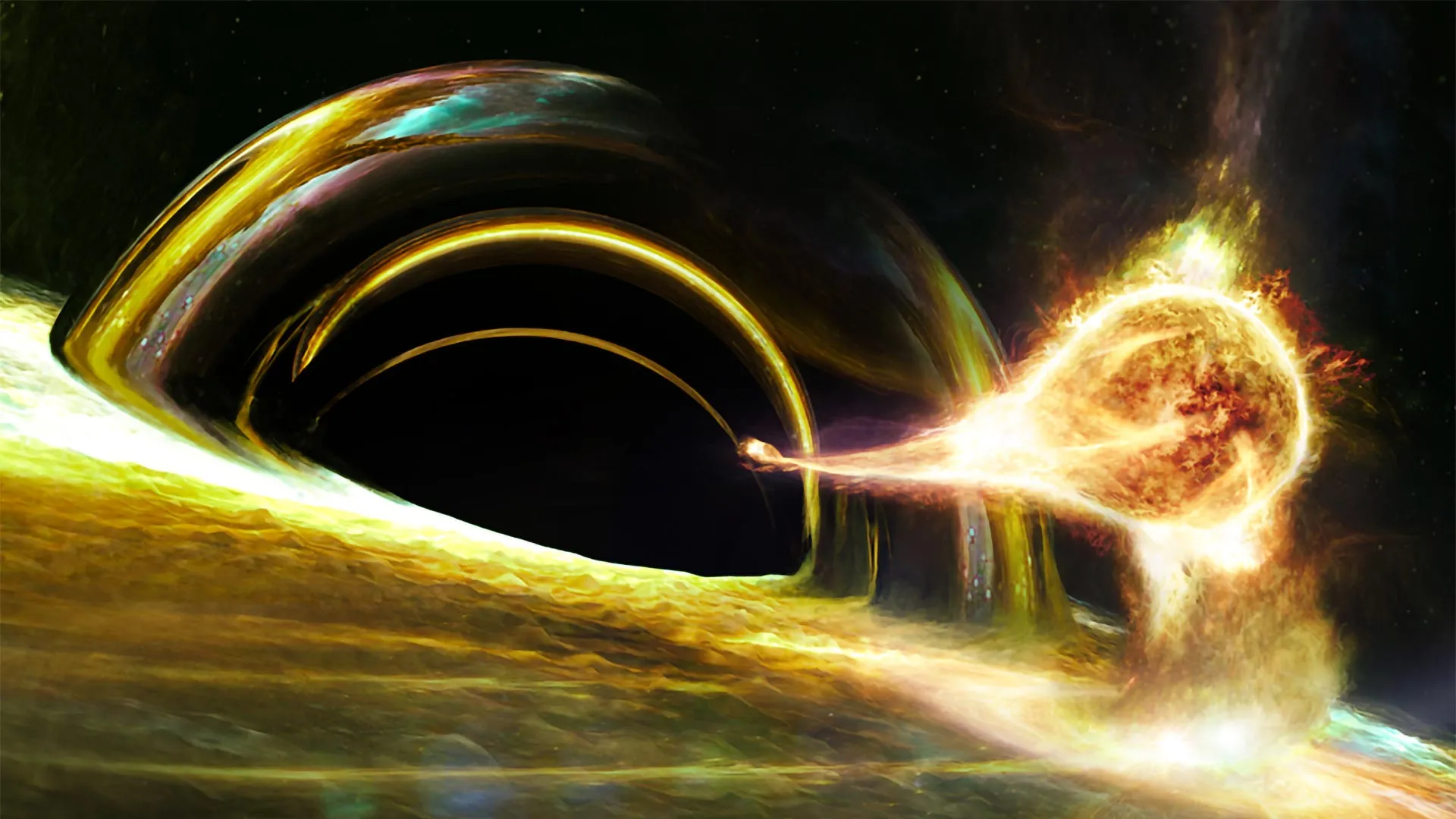Star survives black hole and comes back for more
A new discovery upends accepted view of encounters between stars and black holes.
- Date:
- August 6, 2025
- Source:
- Tel-Aviv University
- Summary:
- This is the first confirmed case of a star that survived an encounter with a supermassive black hole and came back for more. This discovery upends conventional wisdom about such tidal disruption events and suggests that these spectacular flares may be just the opening act in a longer, more complex story.
- Share:

Lightning might not strike twice, but black holes apparently do. An international group of researchers led by Tel Aviv University astronomers observed a flare caused when a star falls onto a black hole and is destroyed. Surprisingly, this flare occurred about two years after a nearly identical flare named AT 2022dbl, from the exact same location. This is the first confirmed case of a star that survived an encounter with a supermassive black hole and came back for more. This discovery upends conventional wisdom about such tidal disruption events and suggests that these spectacular flares may be just the opening act in a longer, more complex story.
The study was led by Dr. Lydia Makrygianni (a former postdoc at Tel Aviv University and currently a researcher at Lancaster University in the UK) under the supervision of Prof. Iair Arcavi, a member of the Astrophysics Department at Tel Aviv University, and Director of the Wise Observatory in Mizpe Ramon. Prof. Ehud Nakar, Chair of the Astrophysics Department, and students Sara Faris and Yael Dgany from Arcavi's research group also took part in the research, alongside many international collaborators. The results are published in a July issue of the Astrophysical Journal Letters.
The researchers explain that at the center of every large galaxy lies a black hole that is millions to billions of times the mass of the sun. Such a supermassive black hole exists also in our own Milky Way Galaxy, its discovery was awarded the 2020 Nobel Prize in physics. But beyond knowing they're there, it's not well understood how such monsters form, nor how they affect their host galaxies. One of the main challenges in understanding these black holes is that they are, well, black. A black hole is a region of space where gravity is so strong that not even light can escape. The supermassive black hole in the center of the Milky Way was discovered thanks to the movement of stars in its vicinity. But in other, more distant, galaxies, such movement cannot be discerned.
Luckily, or unluckily, depending on your point of view, once every 10,000 to 100,000 years, a star will wander too close to the supermassive black hole in the center of its galaxy, resulting in it getting ripped to shreds. Half of the star will be "swallowed" by the black hole, and half thrown outward. When material falls onto a black hole, it does so in a circular fashion, much like water going down the bathtub drain. Around black holes, however, the velocity of the rotating material approaches the speed of light, the material is heated and radiates brilliantly. Such an unlucky star thus "illuminates" the black hole for a few weeks to months, providing astronomers with a brief opportunity to study its properties.
Strangely, though, these flares have not been behaving as expected. Their brilliance and temperature were much lower than predicted. After about a decade of trying to understand why, AT 2022dbl may have provided the answer. The repetition of the first flare in an almost identical manner two years later implies that at least the first flare was the result of the partial disruption of the star, with much of it surviving and coming back for a (nearly identical) additional passage. These flares are thus more of a "snack" by the supermassive black hole than a "meal."
"The question now is whether we'll see a third flare after two more years, in early 2026" says Prof. Arcavi. "If we see a third flare," continues Arcavi, "it means that the second one was also the partial disruption of the star. So maybe all such flares, which we have been trying to understand for a decade now as full stellar disruptions, are not what we thought." If a third flare does not occur, then the second flare could have been the full disruption of the star. The implication is that partial and full disruptions look almost identical, a prediction made before this discovery by the research group of Prof. Tsvi Piran at the Hebrew University. "Either way," adds Arcavi, "we'll have to re-write our interpretation of these flares and what they can teach us about the monsters lying in the centers of galaxies."
Story Source:
Materials provided by Tel-Aviv University. Note: Content may be edited for style and length.
Journal Reference:
- Lydia Makrygianni, Iair Arcavi, Megan Newsome, Ananya Bandopadhyay, Eric R. Coughlin, Itai Linial, Brenna Mockler, Eliot Quataert, Chris Nixon, Benjamin Godson, Miika Pursiainen, Giorgos Leloudas, K. Decker French, Adi Zitrin, Sara Faris, Marco C. Lam, Assaf Horesh, Itai Sfaradi, Michael Fausnaugh, Ehud Nakar, Kendall Ackley, Moira Andrews, Panos Charalampopoulos, Benjamin D. R. Davies, Yael Dgany, Martin J. Dyer, Joseph Farah, Rob Fender, David A. Green, D. Andrew Howell, Thomas Killestein, Niilo Koivisto, Joseph Lyman, Curtis McCully, Morgan A. Mitchell, Estefania Padilla Gonzalez, Lauren Rhodes, Anwesha Sahu, Giacomo Terreran, Ben Warwick. The Double Tidal Disruption Event AT 2022dbl Implies that at Least Some “Standard” Optical Tidal Disruption Events Are Partial Disruptions. The Astrophysical Journal Letters, 2025; 987 (1): L20 DOI: 10.3847/2041-8213/ade155
Cite This Page: